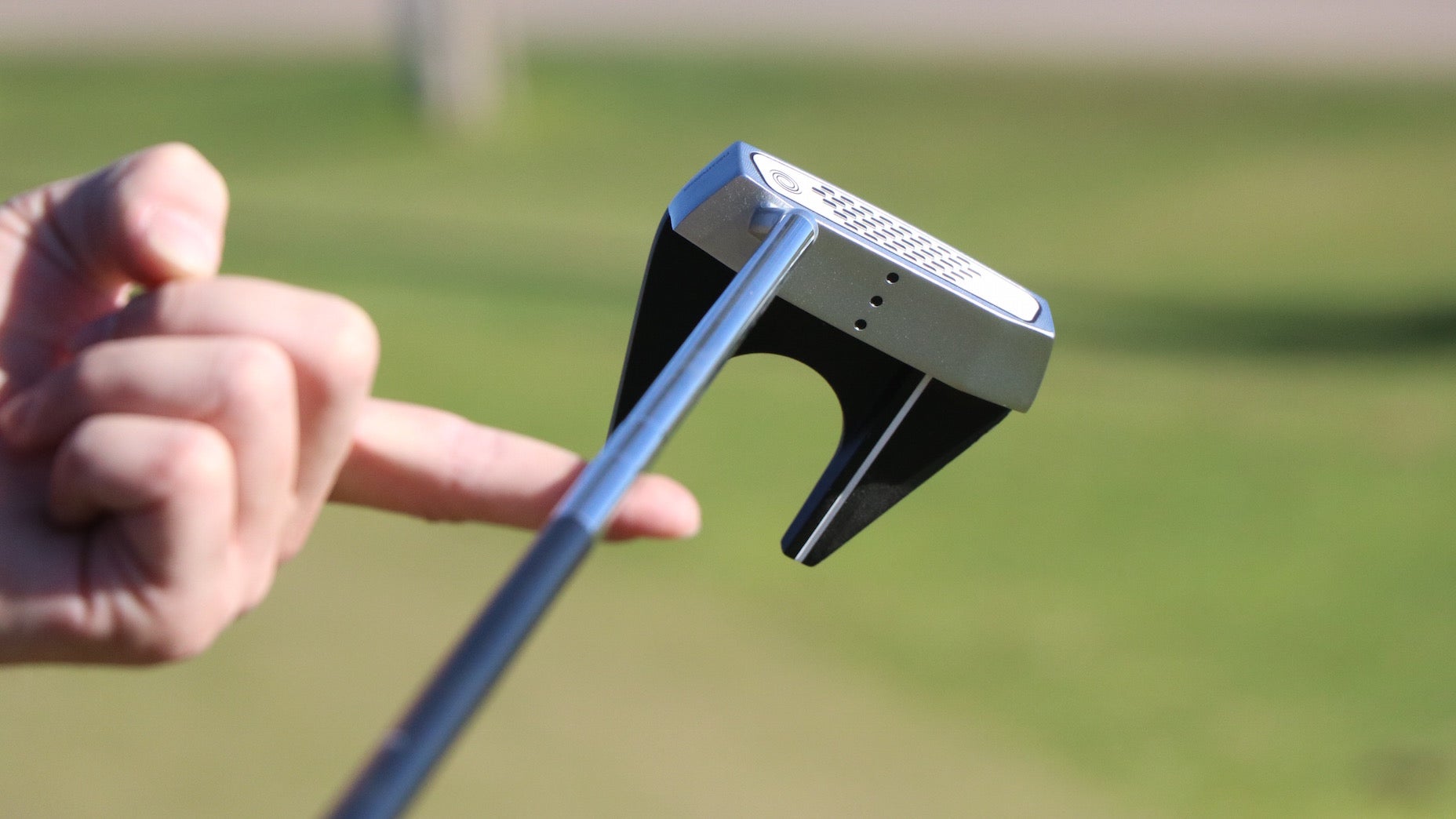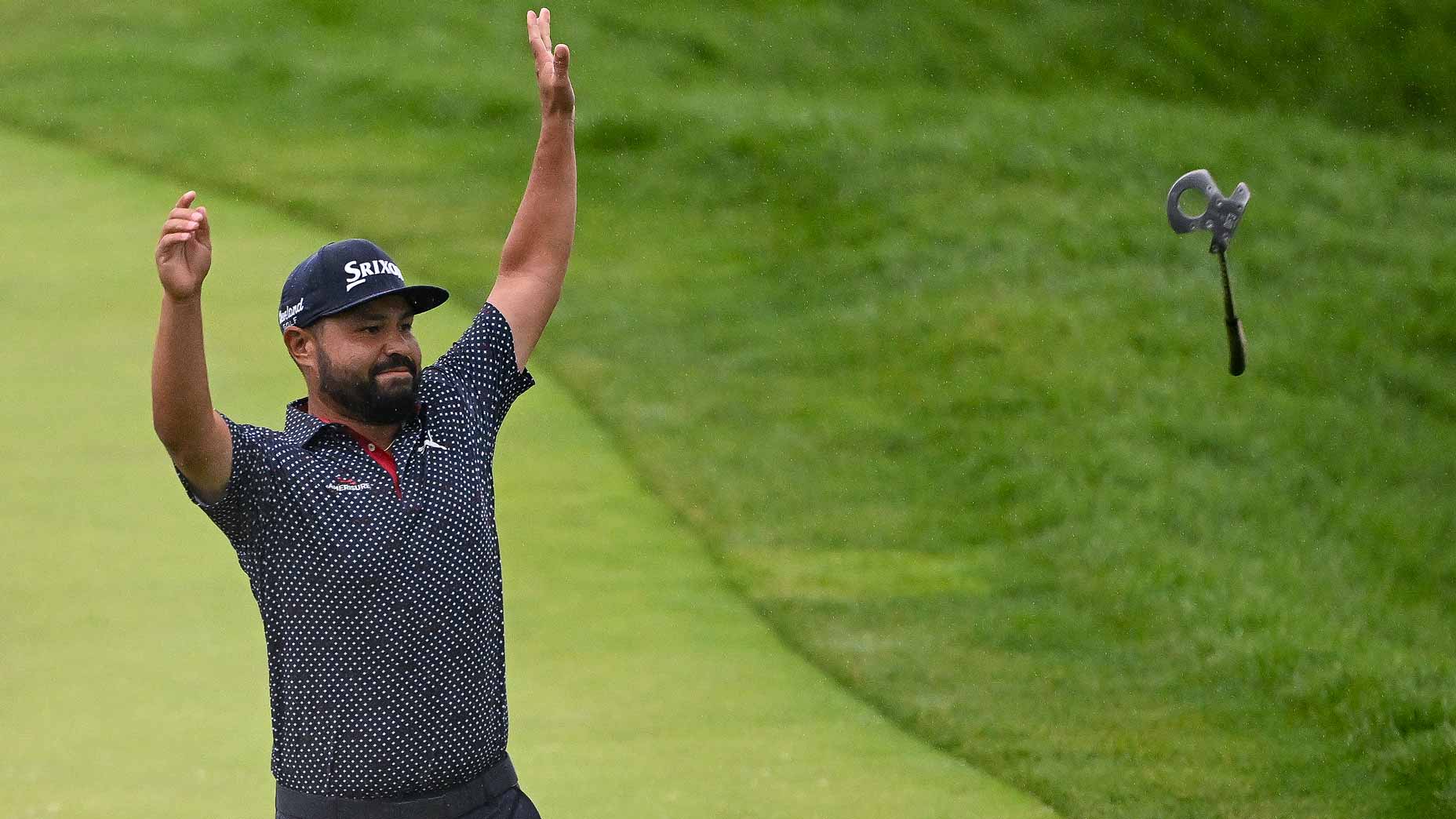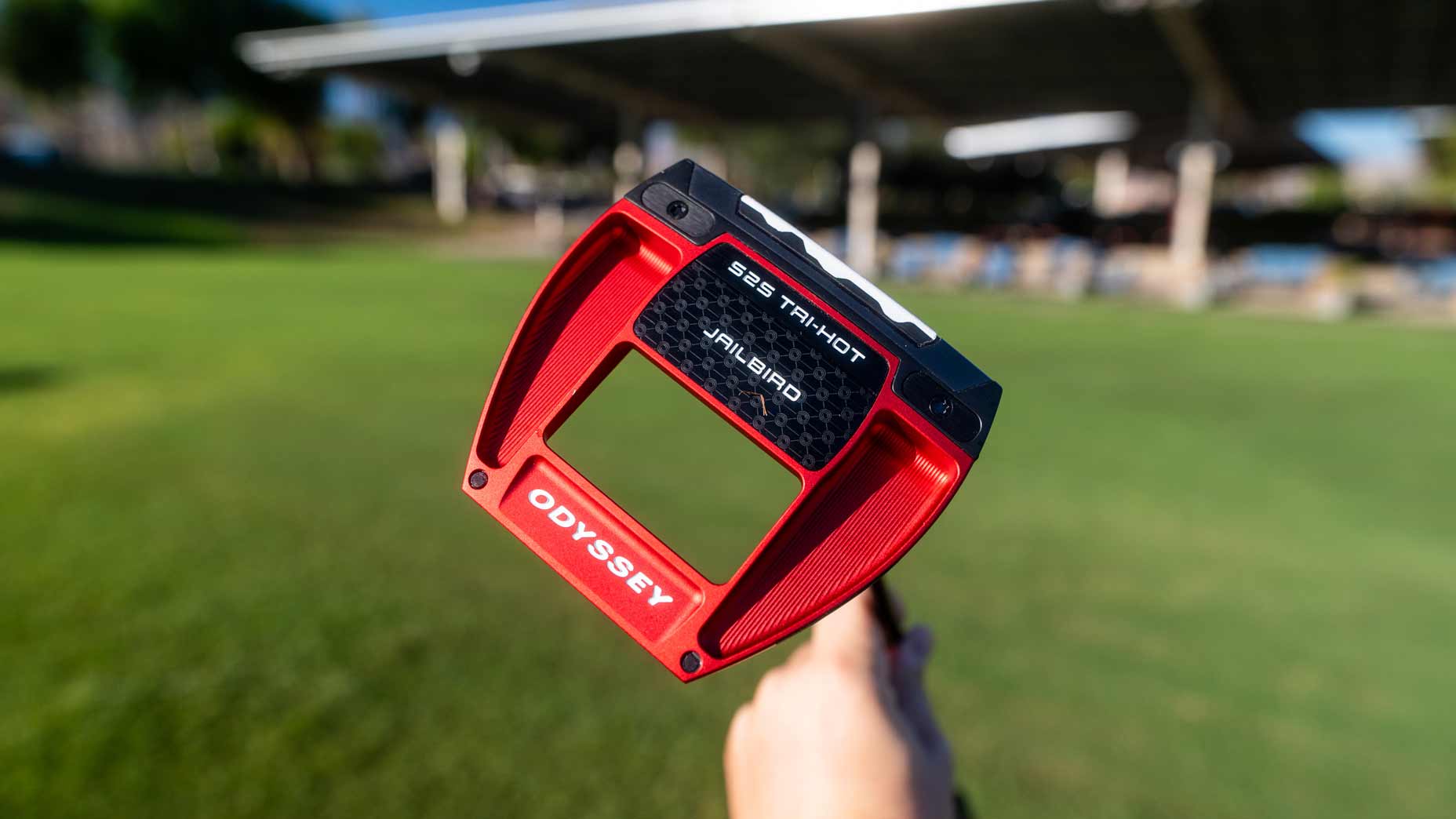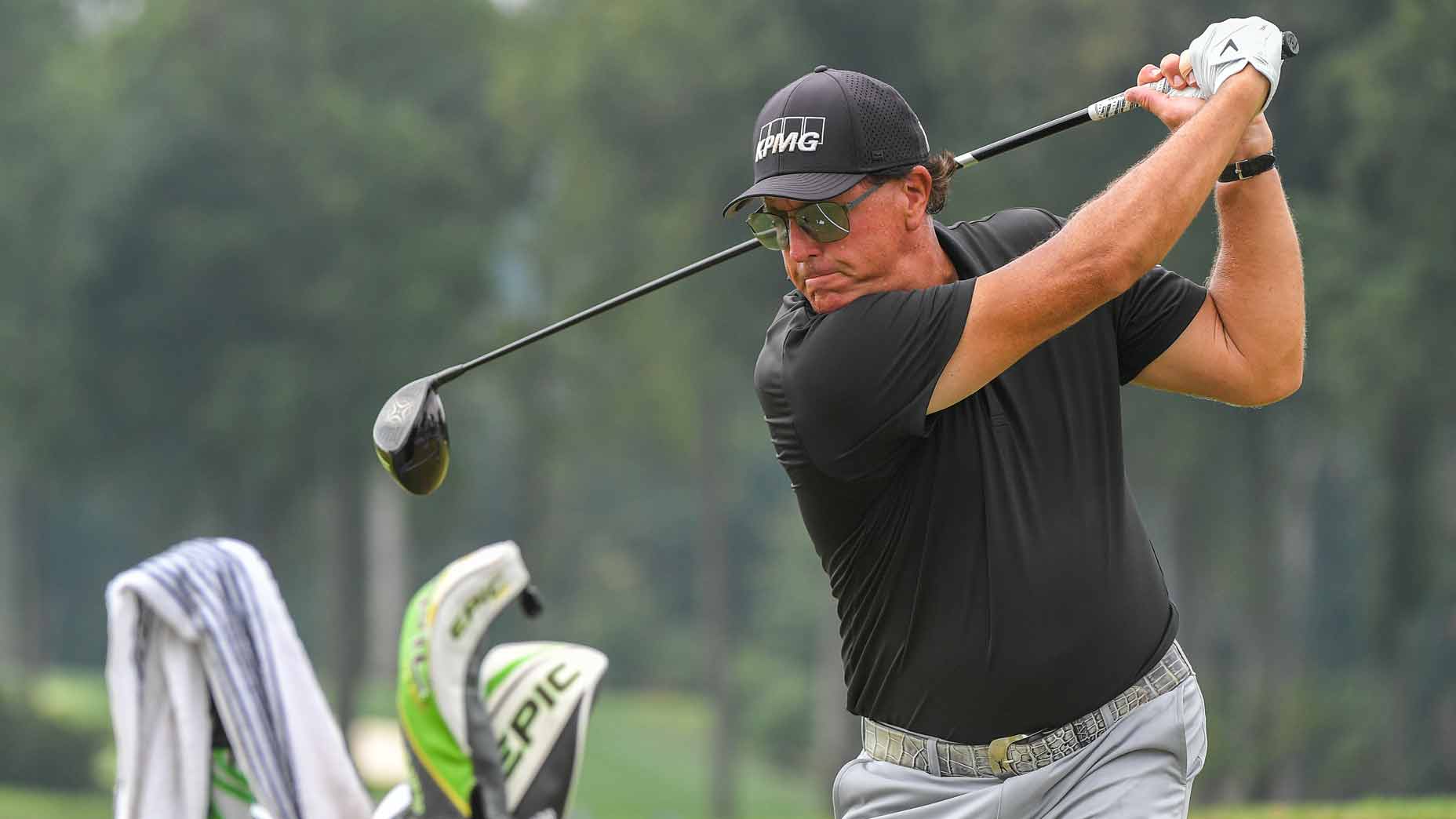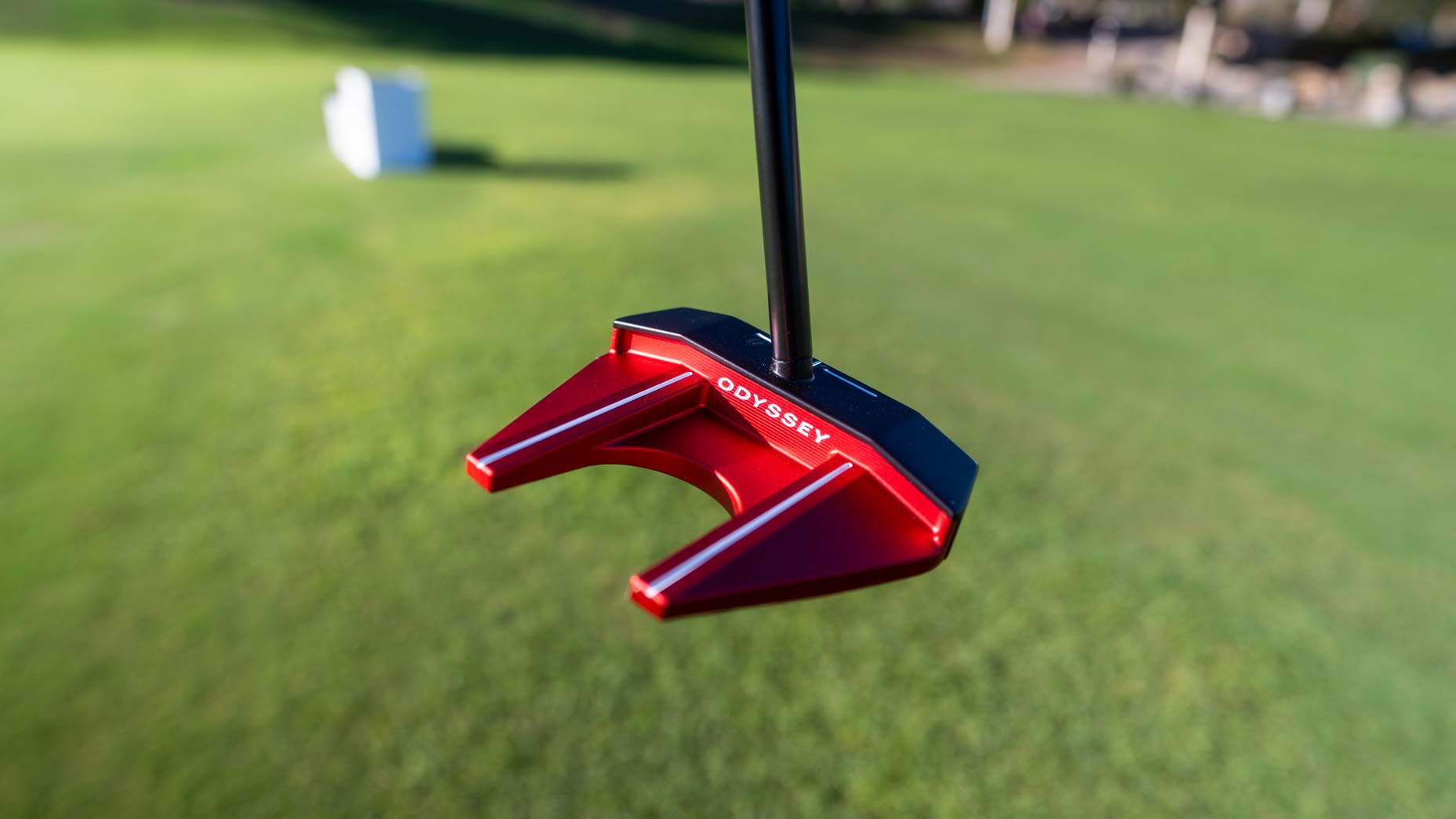By now, you’re likely aware that different putter designs are made to match different styles of putting strokes. Factors such as putter length, grip size, grip shape, overall weight, swing weight, lie angle, loft, head shape, face design, shaft material and hosel configuration all play an important role in how a certain putter marries up with your particular stroke. That’s why a putter fitting is so helpful if you’re searching for comfort and confidence on the putting green.
One particularly important (yet often misunderstood) ingredient in finding a putter that fits your stroke is something called “toe hang.” Essentially, toe hang helps describe the relationship between the axis of the putter shaft and the head’s center of gravity (CG).

You can figure out the toe hang of your putter by balancing the shaft on your finger, as illustrated above. When the club is perfectly balanced and sits horizontal relative to the ground, take a look at the club head. The more the toe of your putter head droops toward the ground, the more toe hang it has. If the face of your putter points toward the sky, then it’s face balanced.
Due to increasing demand for toe hang options in both the market as a whole and in the professional game, putter makers have increased the amount of hosel options that lead to differing degrees of toe hang. In the most basic sense, more toe hang will better suit golfers who have arcing strokes; these players tend to rotate the face open and shut more throughout the stroke. Face balanced designs, on the other hand, typically suit golfers who have a more straight-back and straight-through stroke with little or no face rotation.
As discussed on our recent Fully Equipped podcast, however, there’s a common misconception about toe hang and how it relates to face closure. Luckily, Guerin Rife, a longtime putter inventor and CEO of EvnRoll, helped clear things up.
Some golfers think that since toe hang putters open and close more throughout the stroke that it means they are easier to square up at impact. As such, they think that if they’re leaving the face open too often at impact that a toe hang putter will solve their issue.
Of course, having a square face at impact is crucial to hitting putts on line, but, as Rife explains, toe hang putters are not necessarily the answer to the open-faced problem. Toe hang may actually make the issue of leaving the face open worse!
As Rife explains, toe hang putters have more head weight on the toe side. During the putting stroke, that toe-heavy weight distribution causes the putter head to open on the backstroke. As you change direction to make the forward stroke, the putter head continues to lag, causing the putter head to remain open. Therefore, as the putter head moves more toward impact, the golfer must close the face to square it. Without squaring the face up, golfers may have a tendency to leave the face open and push the ball. For righties, that means missing the target to the right (lefties who “push” will miss left).
So, if you’re a golfer who tends to push the ball, using a toe hang putter could exacerbate your miss. According to Rife, golfers who struggle with squaring the face properly may actually be better suited for face balanced putters, rather than ones with toe hang.
Now, there are plenty of great putters on both sides of the spectrum. There are great players who use toe hang putters, and great putters who use face balanced putters. Rife’s point, though, is that those who struggle with squaring the face may want to opt for face balance.
“We have good players that can handle [the release of toe hang putters],” Rife said. “For those who are not highly skilled in squaring the face up at impact, then those people need more face balance. It’s less unruly toe movement coming through the stroke. That’s why we have the different hosels…all of those {hosel options] are to help golfers who have different talent or want something that’s face balanced.”
The best way to figure out once and for all which style is best for you is to get a full professional fitting from an expert fitter, such as GOLF.com’s sister company True Spec Golf. Click here for more information on how to book a putter fitting.
To listen to the entire interview with Guerin Rife, click on the Spotify embed below!
